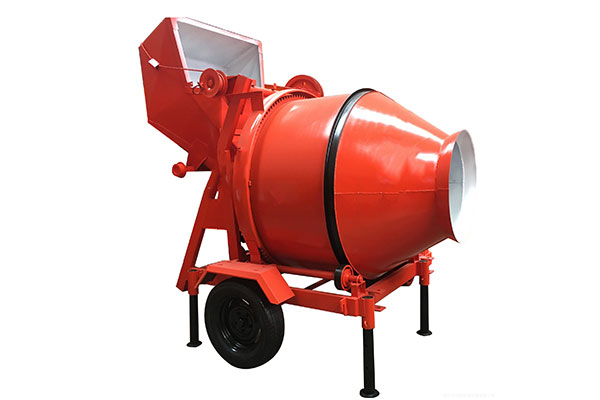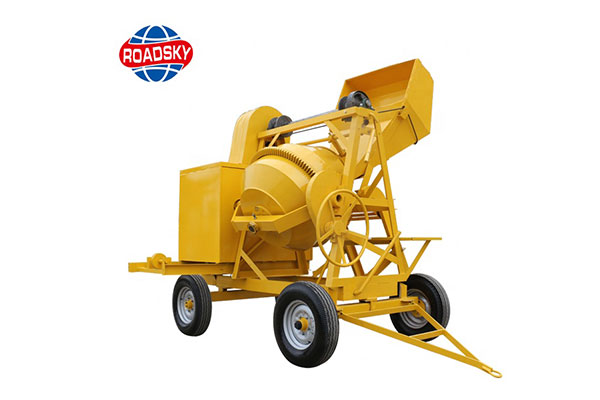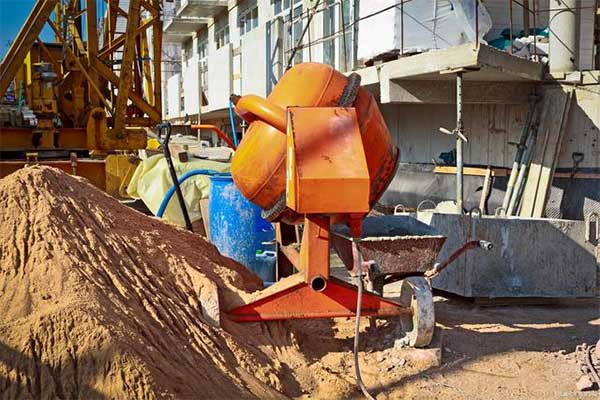Mortar Mixer vs. Concrete Mixer: What’s the Difference?
When it comes to construction projects, using the right type of mixer is crucial for ensuring the quality and longevity of the finished work. Two common types of mixers used in construction are mortar mixers and concrete mixers. Although they might seem similar, they are designed for different purposes and materials. Understanding the difference between a mortar mixer and a concrete mixer can help you choose the best tool for your specific project needs.

What is a Mortar Mixer?
A mortar mixer is specifically designed to mix mortar, which is a combination of cement, sand, and water. Mortar is generally used for binding bricks, blocks, and stones in masonry work. Mortar mixers are characterized by their rotating paddles or blades, which scrape the sides of a stationary drum. This design allows for a thorough and consistent mixing of the mortar, ensuring that all ingredients are fully blended together.
Key Features of Mortar Mixers:
- Stationary Drum: Unlike concrete mixers, mortar mixers have a stationary drum where the paddles rotate inside. This setup is ideal for mixing thicker materials like mortar, plaster, stucco, and grout.
- Horizontal Paddles: The horizontal paddles provide a more effective mixing action for the sticky consistency of mortar. This design ensures that all components are well combined, reducing the likelihood of dry spots or clumps.
- Smaller Capacity: Mortar mixers typically have a smaller capacity than concrete mixers. This is because mortar is used in smaller quantities and does not require the large-scale mixing that concrete does.

What is a Concrete Mixer?
A concrete mixer, also known as a cement mixer, is used to mix concrete, which is a mixture of cement, sand, gravel, and water. Concrete is commonly used for constructing foundations, slabs, and other large-scale structural elements. Concrete mixers are designed to mix these heavier materials efficiently and are generally larger in size.
Key Features of Concrete Mixers:
- Rotating Drum: Concrete mixers have a rotating drum that tilts to pour the mixed concrete. The rotation helps to mix the materials thoroughly and keep the aggregate, such as gravel, suspended throughout the mixture.
- Inclined Drum: The inclined drum design, combined with internal blades or fins, allows for a tumbling action that is ideal for mixing the coarser aggregates found in concrete.
- Larger Capacity: Concrete mixers are built to handle larger volumes of material, making them suitable for larger construction projects. They are often used on job sites where substantial amounts of concrete are needed.

Key Differences Between Mortar Mixers and Concrete Mixers
- Material Consistency: The most significant difference between the two mixers is the consistency of the material they are designed to handle. Mortar mixers are made for mixing more viscous materials like mortar and plaster, while concrete mixers are meant for the more fluid and aggregate-heavy mix of concrete.
- Mixing Mechanism: Mortar mixers have a stationary drum with rotating paddles to mix the materials, which is ideal for mixing thick and sticky substances. In contrast, concrete mixers have a rotating drum that uses gravity to mix the materials and keeps aggregates evenly distributed.
- Size and Capacity: Concrete mixers generally have a larger capacity than mortar mixers because concrete is often needed in larger quantities for structural projects. Mortar mixers are smaller and designed for mixing smaller batches of mortar or plaster for masonry and finishing work.
- Type of Projects: Mortar mixers are typically used in projects where finer, smoother mixtures are required, such as in bricklaying, plastering, and tiling. Concrete mixers, on the other hand, are used for projects requiring durable, robust mixes like building foundations, driveways, and large concrete slabs.
Choosing the Right Mixer for Your Project
When deciding between a mortar mixer and a concrete mixer, consider the specific requirements of your project:
- For Masonry and Finishing Work: If your project involves bricklaying, stonework, or plastering, a mortar mixer is the better choice. Its design is optimized for creating a smooth, consistent mix that is easy to work with for these types of applications.
- For Large Structural Projects: If your project requires a substantial amount of concrete, such as for a foundation, driveway, or patio, a concrete mixer is the ideal tool. Its larger capacity and efficient mixing mechanism ensure that the concrete is properly mixed and ready for use in more extensive construction work.
Conclusion
Understanding the difference between a mortar mixer and a concrete mixer is essential for any construction project. Each type of mixer is designed for a specific purpose, and using the correct one will ensure that your materials are mixed properly and that your project is completed successfully. By selecting the right mixer for your needs, you can achieve the best results and build a strong, durable structure. Whether you are mixing mortar for masonry work or concrete for a foundation, knowing which mixer to use will save you time, effort, and money in the long run.

